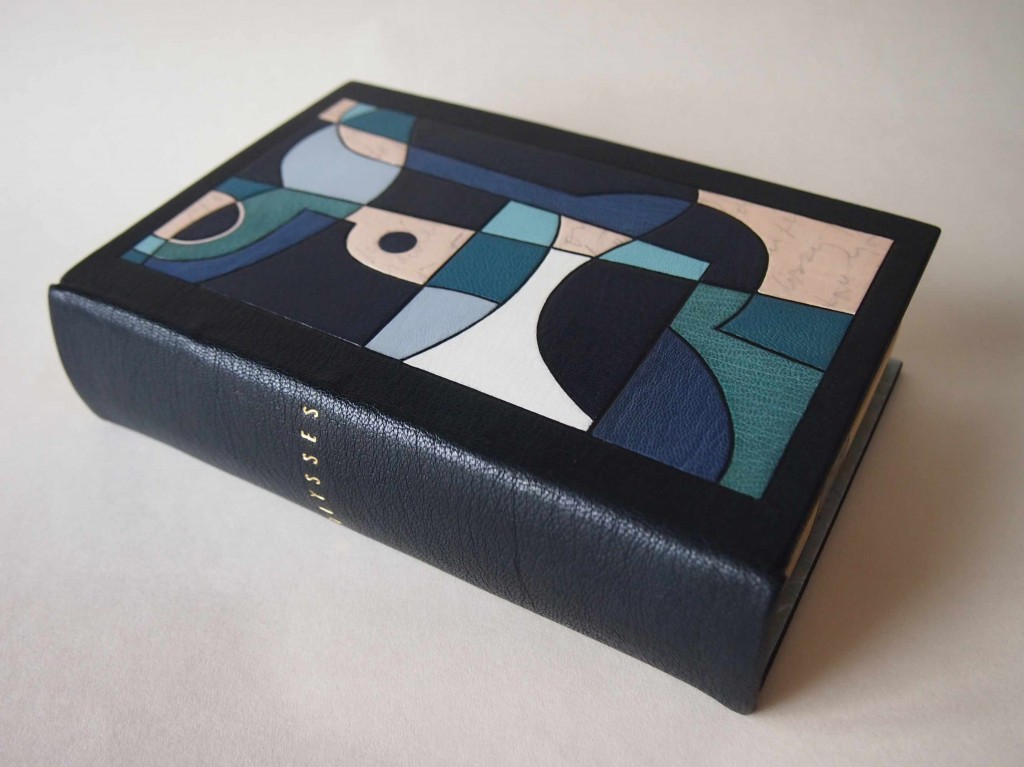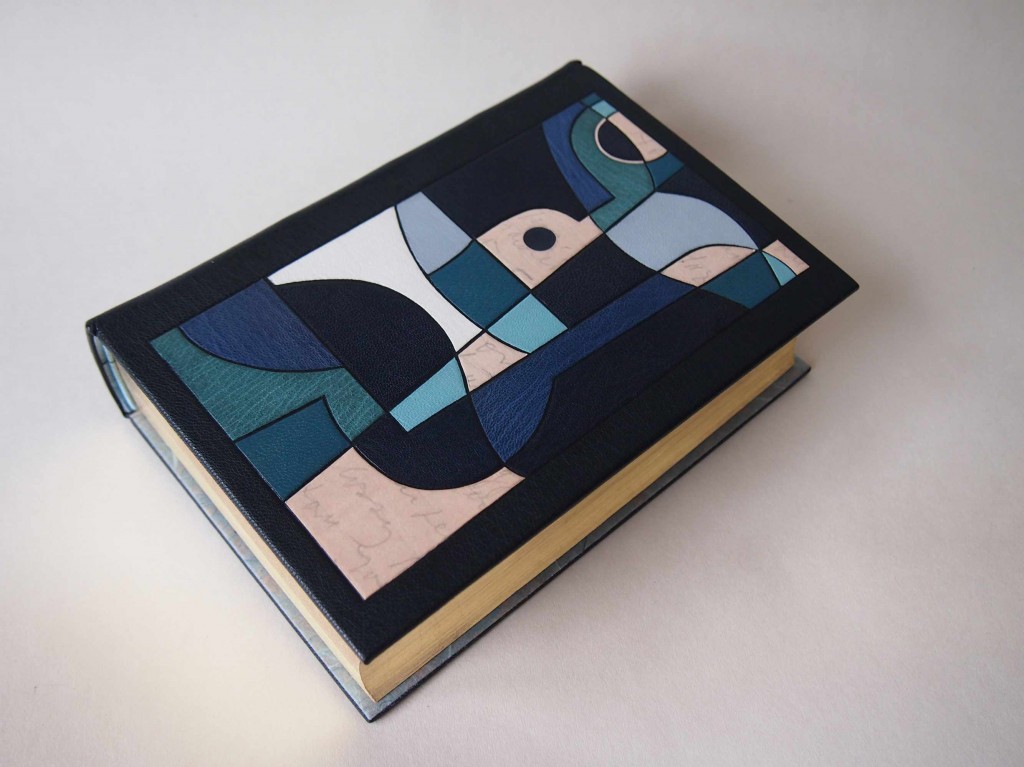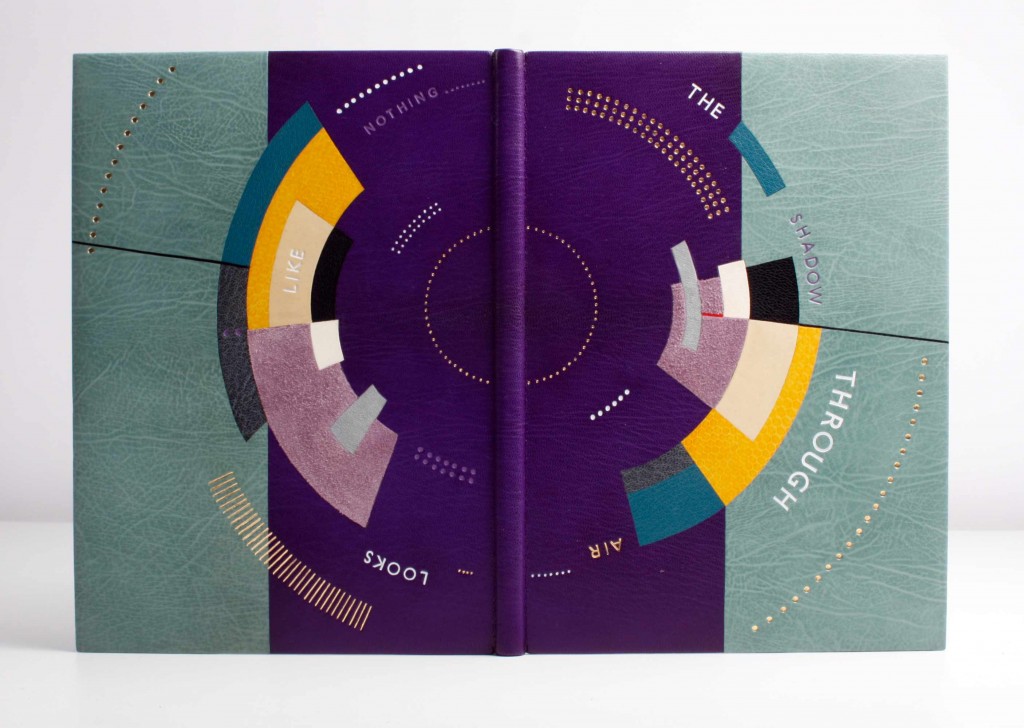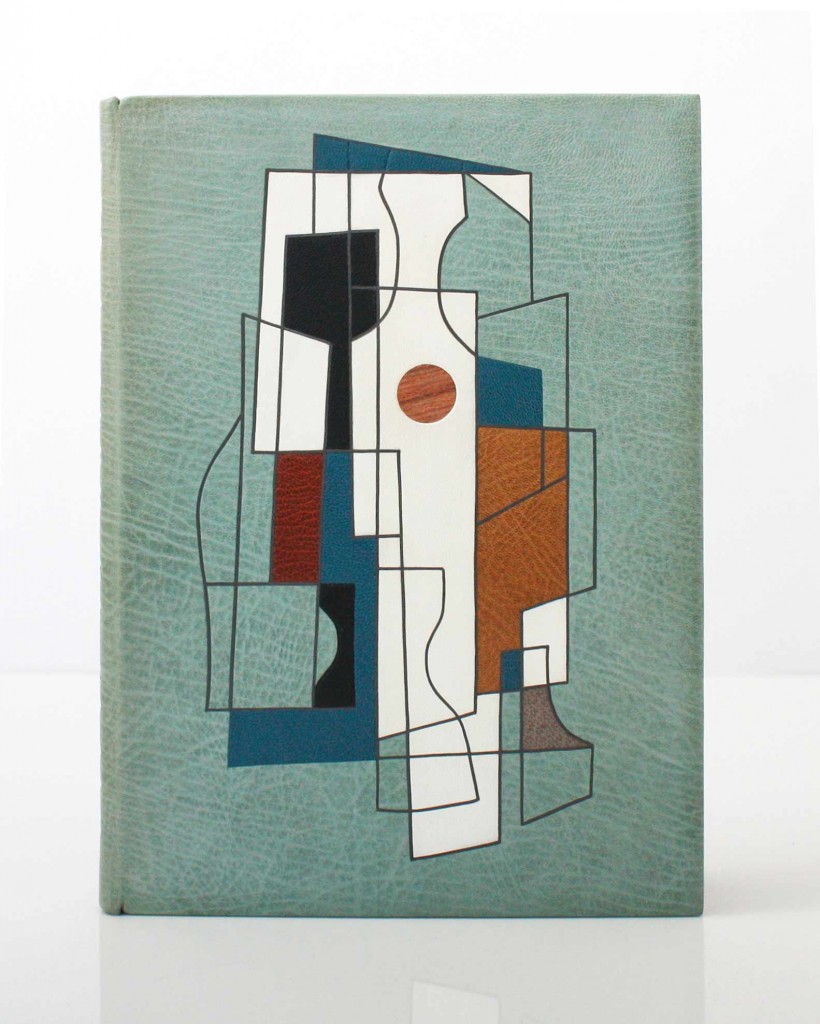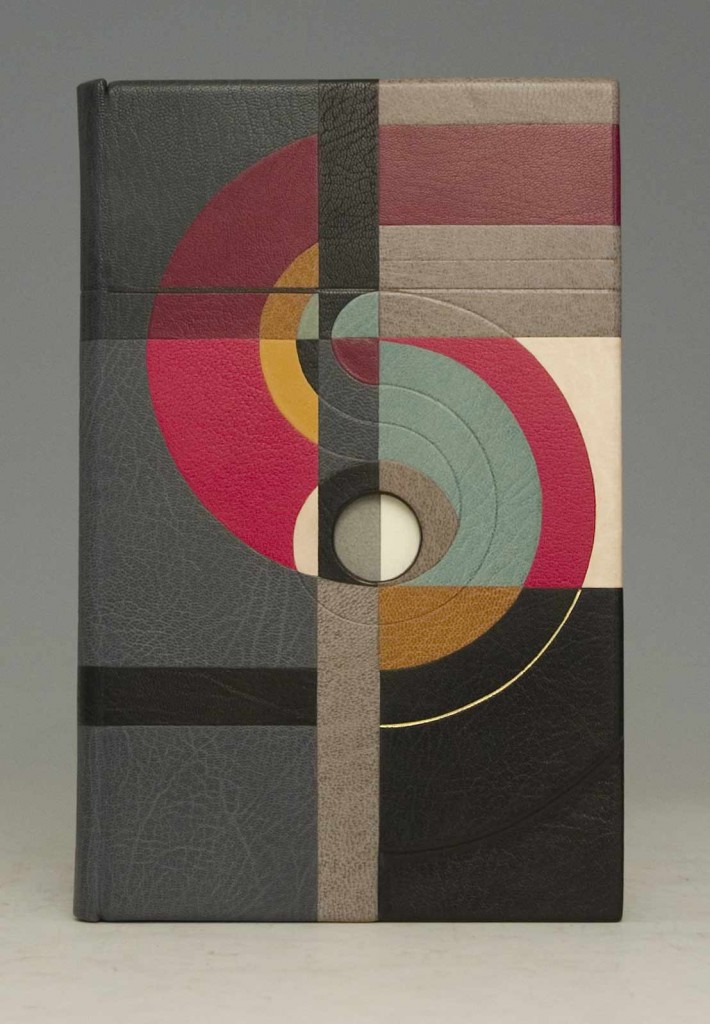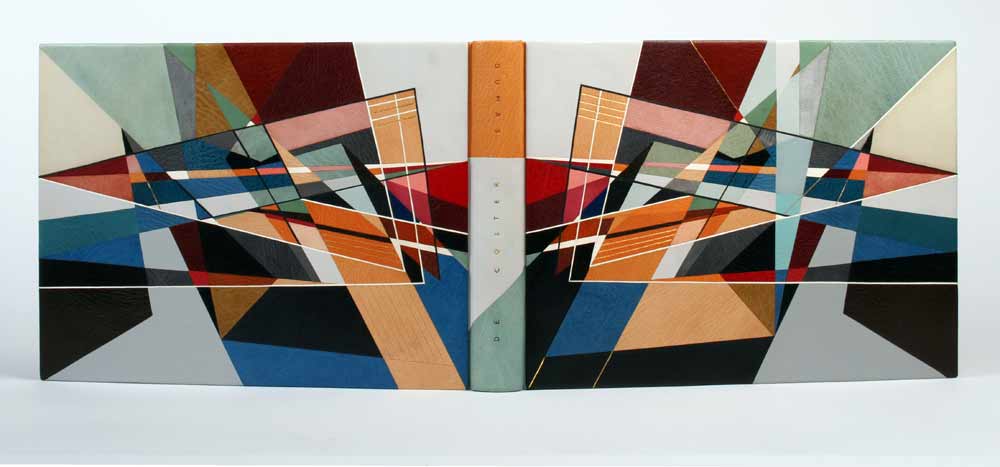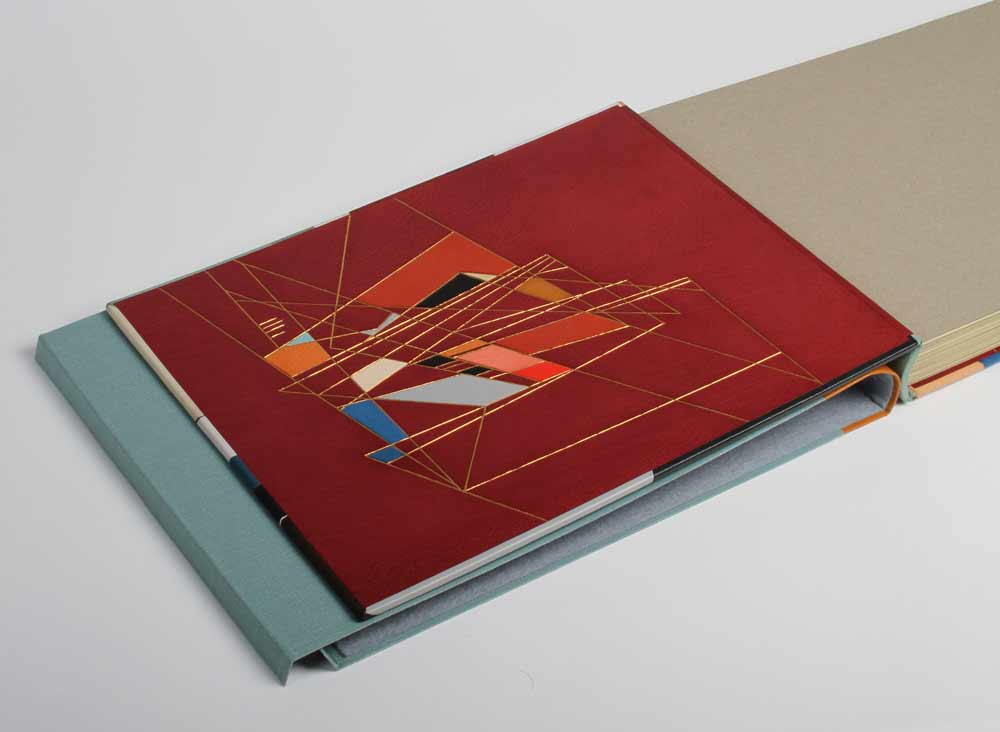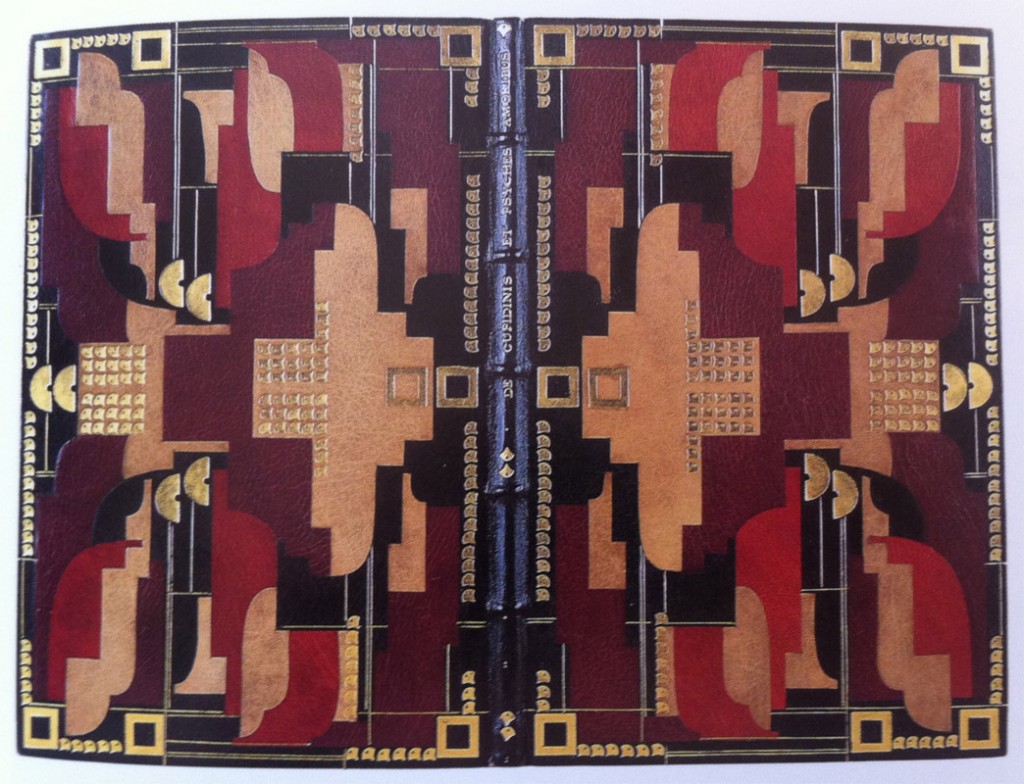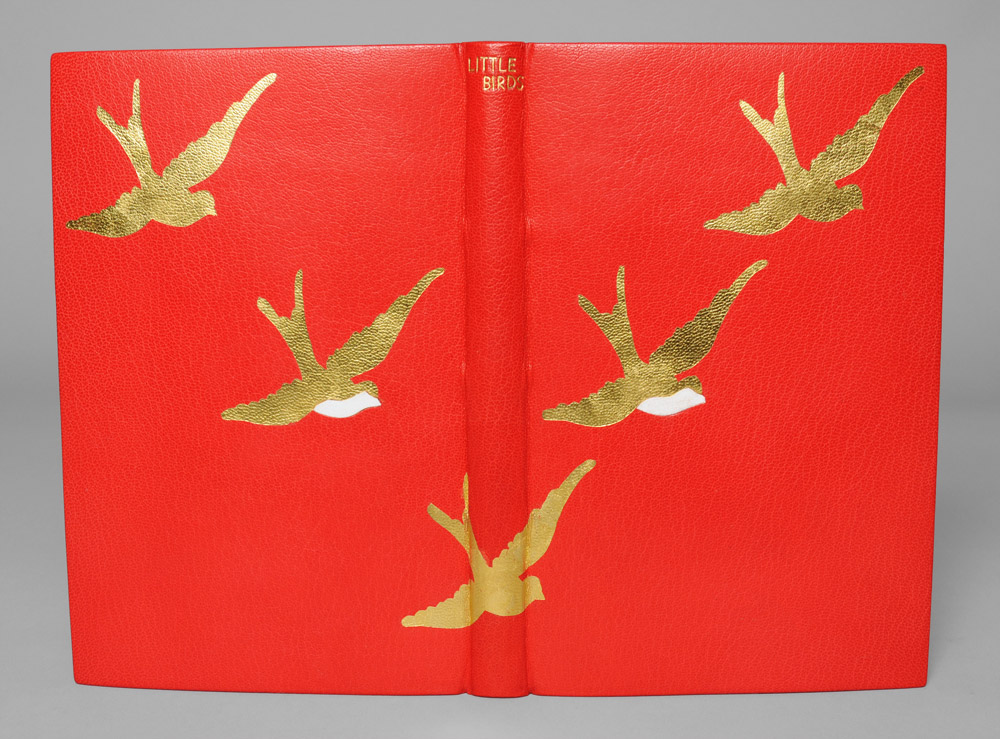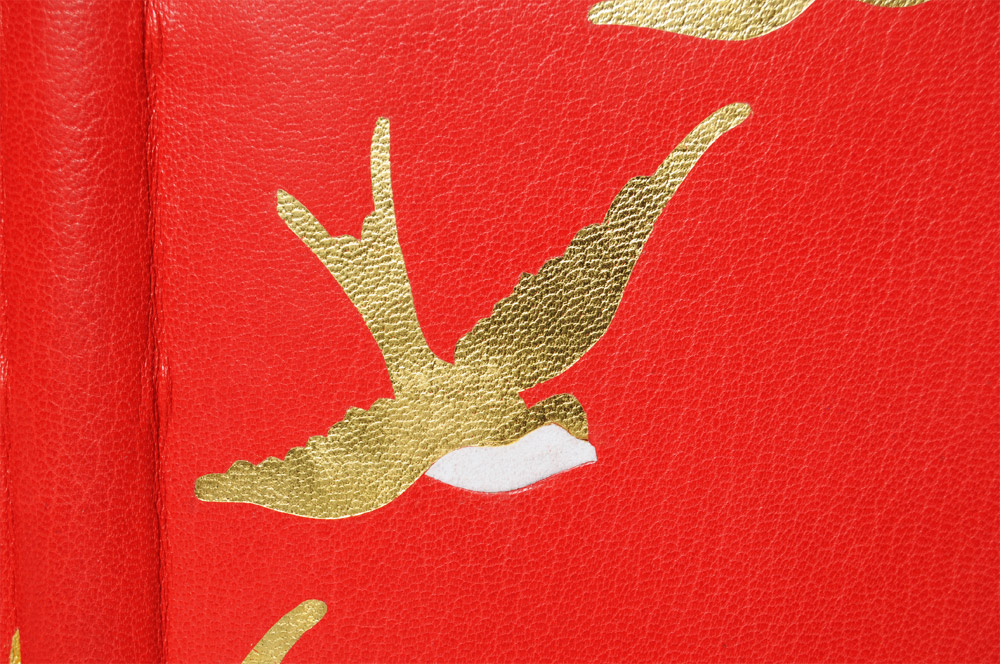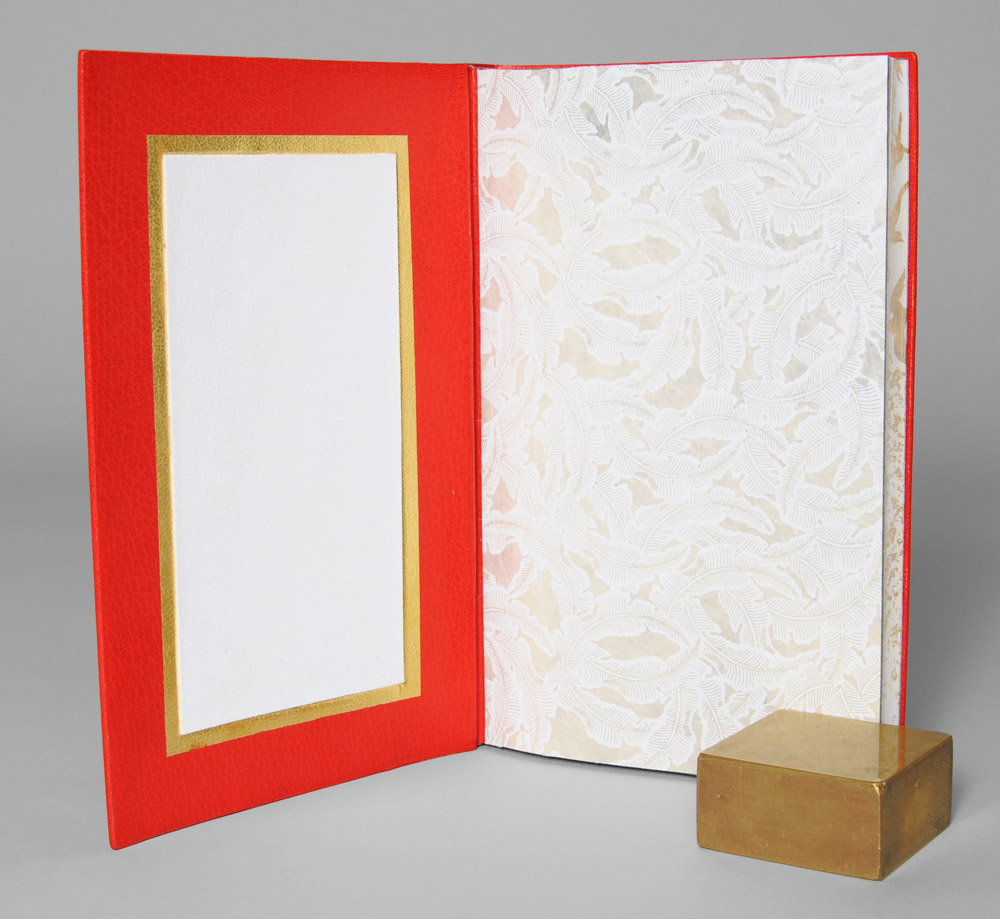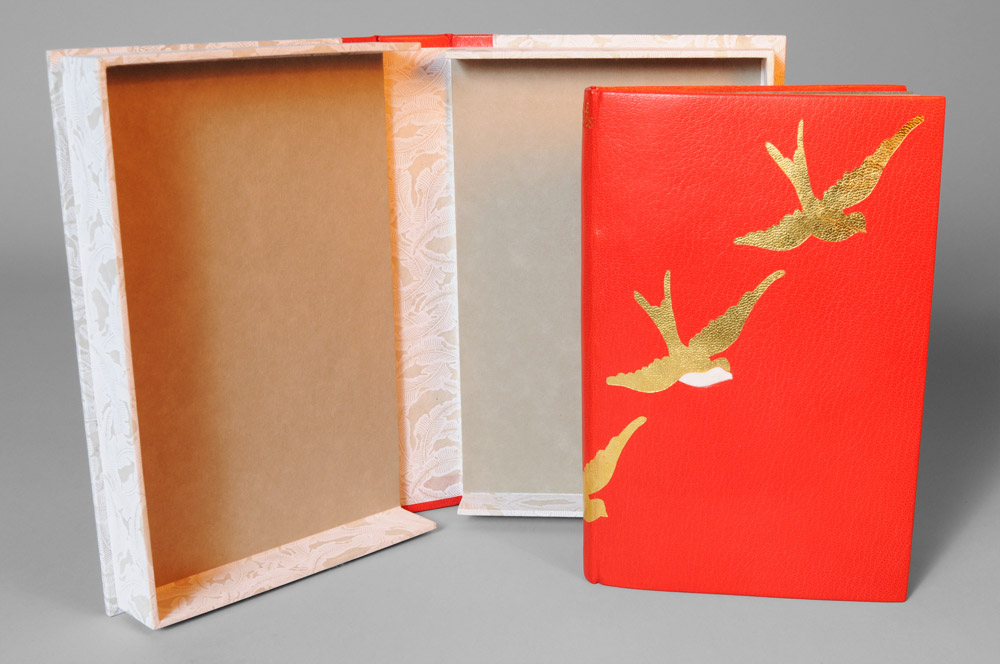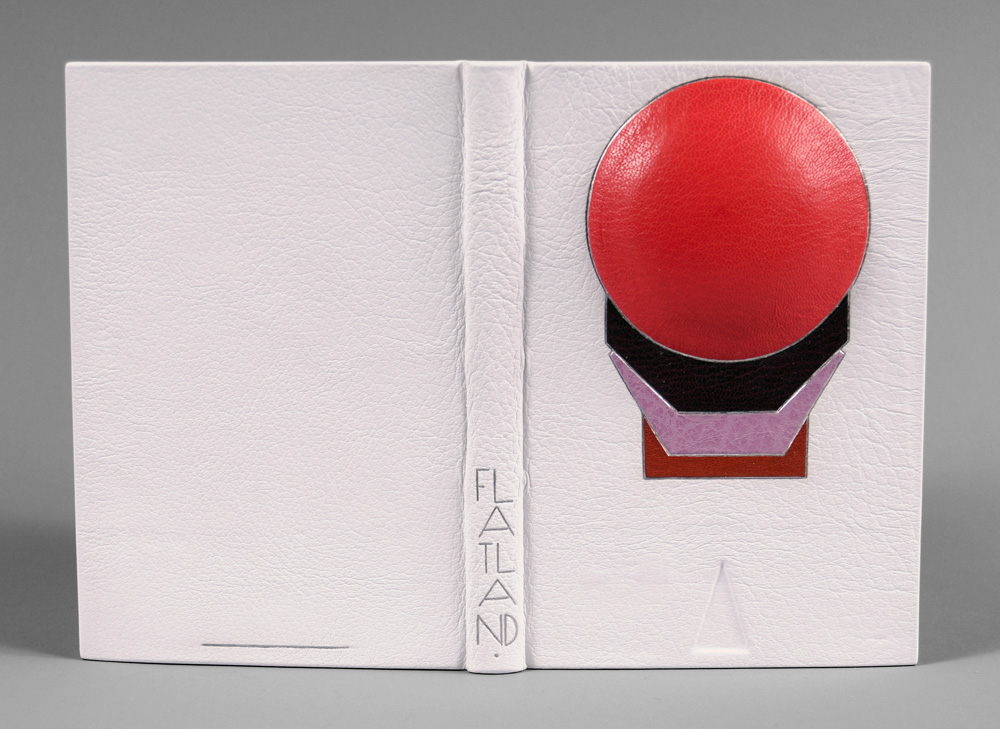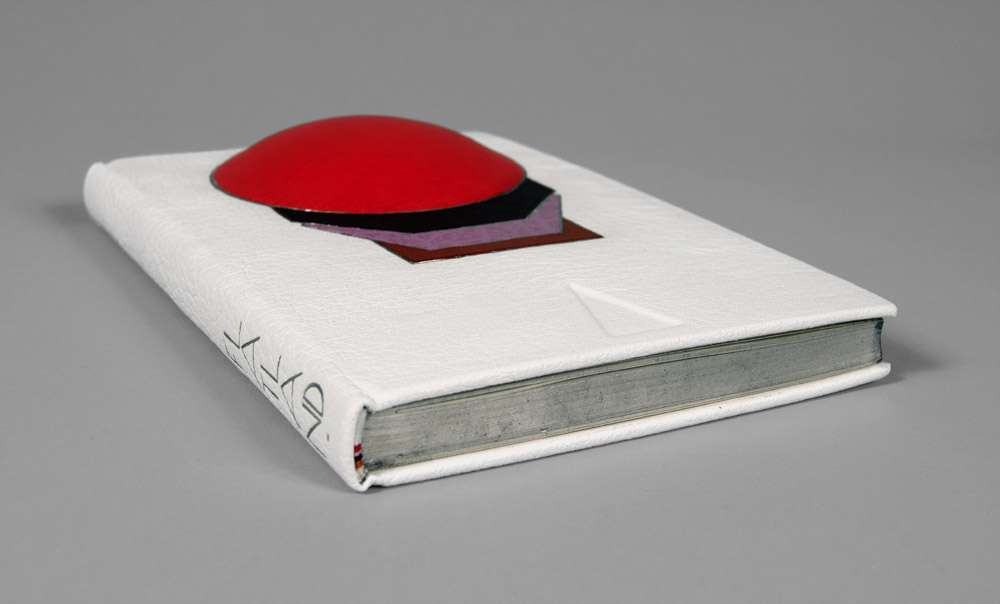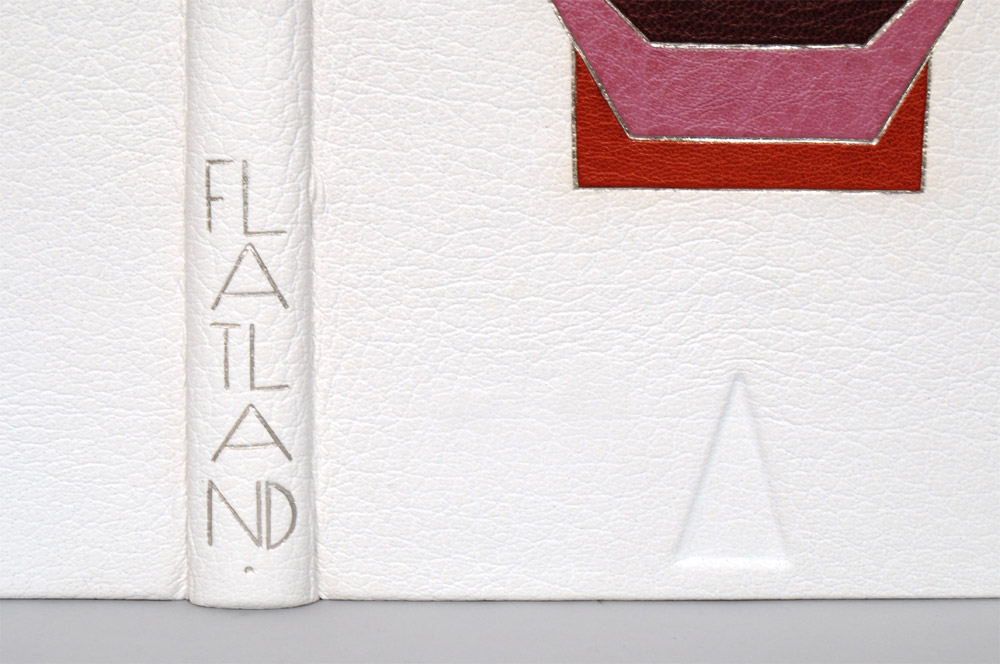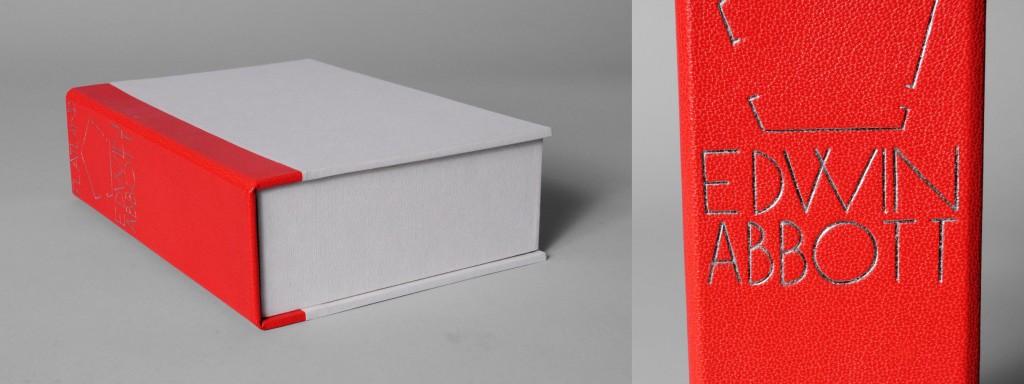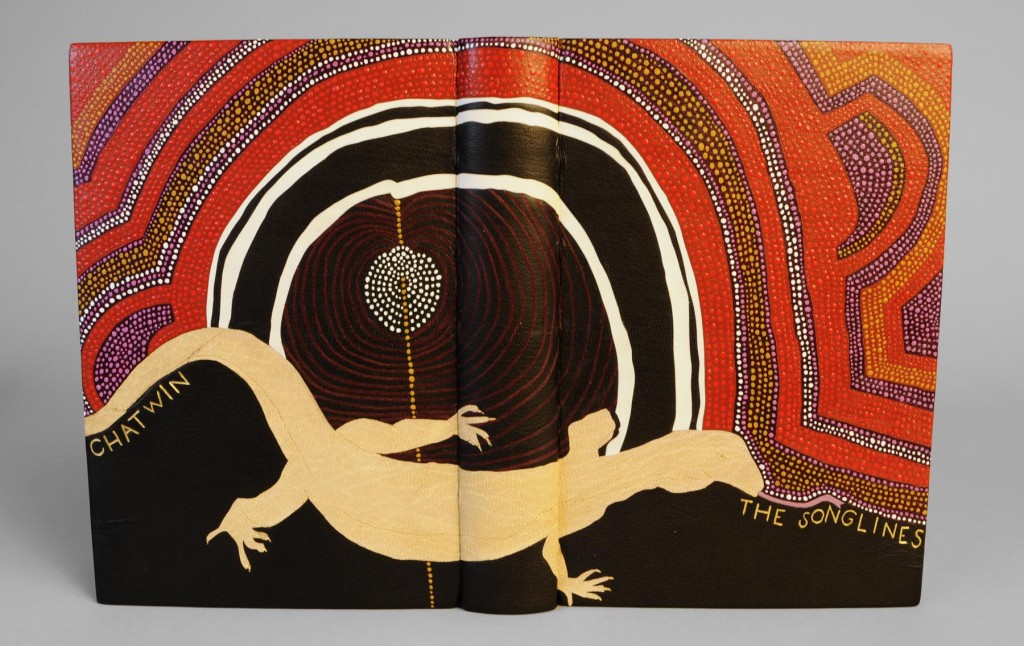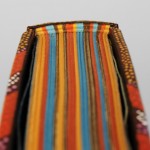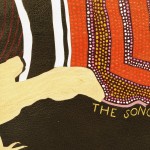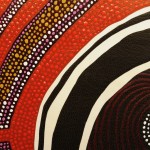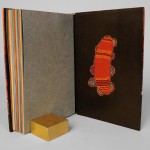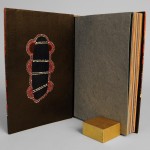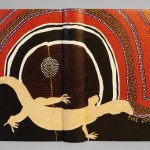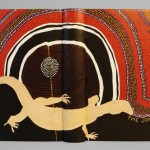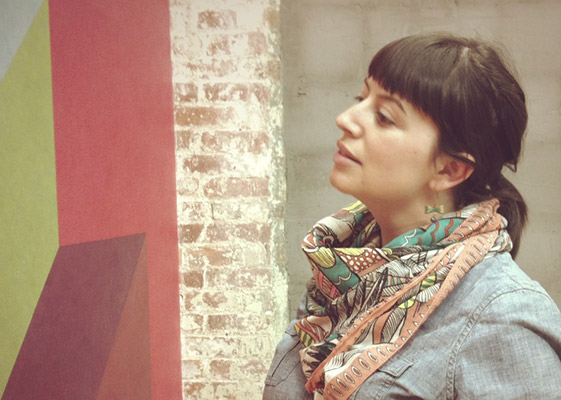In 2012, Derek Hood bound a copy of James Joyce’s Ulysses in full dark blue goatskin with onlays and inlays in various leathers. Printed on natural calfskin (and used as onlays) are excerpts from Joyce’s recently released handwritten manuscript of Ulysses. The book was sewn on hemp cords, which were laced into the boards. The book edges are gilt in 24kt leaf, as is the title on the spine. Endpapers are leather jointed, with Japanese Kozo doublures.
A hand drawn map of Leopold Bloom’s Dublin by Vladimir Nabokov inspired the design. It follows Bloom’s heady journey, starting from Dublin Bay and meandering across the Liffe. The simple map is intertwined with two fractured Greek masks.

This first edition copy of Ulysses was published by Random House of New York in 1934.
